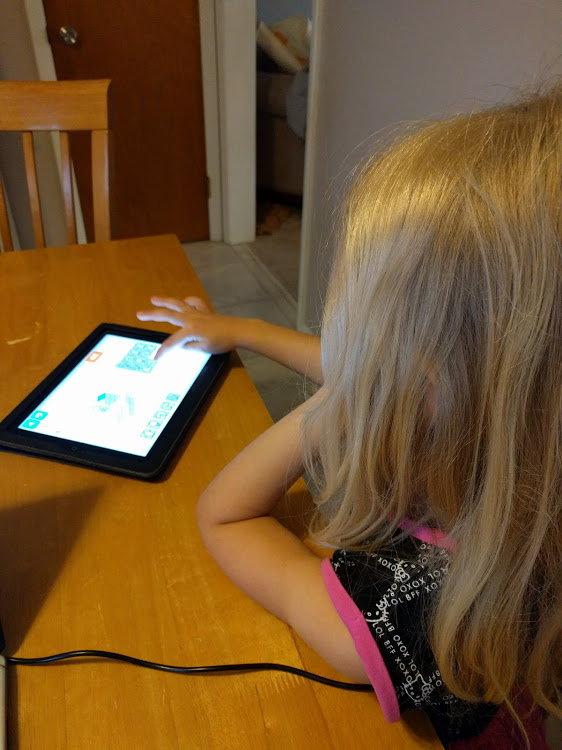By Tech Powered Dad | November 29, 2016

Longtime readers of this blog will know I’m a big fan of the Hour of Code, an initiative with the goal of getting every student to program a computer for at least one hour during the school year. In my last day as a teacher in the public schools, my math department colleagues and I completed it with our students and were impressed how much our high school students could pick up in one class period.
I did wonder, however, if it could work with younger students, as the suggested age ranges for some of the activities imply. I’m a father of three young girls (the youngest having arrived earlier this month), and each of the last couple of years, I’ve been sizing up the oldest to see if she might be ready to jump into the Hour of Code. This year, as a kindergartner, it seemed like it was time to go for it. To set the stage, Rachel is a bright girl, but not a prodigy, just now mastering learning letters and numbers and starting to read. We’ve given her some exposure to technology via tablets (iPad and Kindle Fire) at home, and PCs at the community library and her school, but it’s not something she does not a daily basis, more like one or twice a week. I share this just to point out that she didn’t go into the Hour of Code activity with an special preparation for the activities that any other well adjusted kindergartner wouldn’t have.
The Hour of Code list of activities makes it easy to select by a project by grade level. I went with “pre-reader,” since Rachel is just learning to read. She tried a couple of different activities, the Light Bot, and Kodable. How did it go? Well, the short answer is, she loved it. I was impressed how quickly she adapted to the logic puzzles presented, and within probably 5-10 minutes, she was thinking through strategies for “debugging” her code and making it more efficient.
The more nuanced answer is that after clearing the first wave of 8 levels on the Light Bot, which required no assistance from me, things got more challenging for her. That’s when function calls and eventually recursion come in with Light Bot, and conceptually, that turned out to be a bit too much for her, but it didn’t discourage her at all. We also tried Kodable, and she enjoyed it just as much. I did not yet get into the “blocks” type of coding languages offered for young kids, which appear to be more like a proper coding language (think Scratch), offering “if-then” syntax and such, but we may give that a try on an upcoming weekend.
Bottom line, if you are a teacher (or parent) of young elementary children, I’d encourage you to head over to the Hour of Code website and sign up. Your students absolutely can do this, and you will find that you don’t need to be an sort of computer science expert to help them. Whether you have access to PCs, Macs, Chromebooks, iPads, or Android tablets, they have an activity that can work for you.

